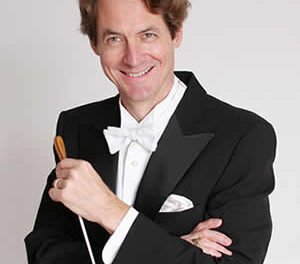The Saint-Clair Trio returned to the Weymouth Center in Southern Pines for a 3:00 p.m. concert on October 6. Weymouth Center was resplendent in its recent restoration, welcoming members, friends and new acquaintances. A visit to its website is a must if you are not acquainted with the mansion.
If it is true that whatever has happened remains in another dimension, Weymouth Center for the Arts and Humanities, with its National Historic Site designation, is the place to experience subsumed history in the Sandhills of North Carolina. We were about to have one more such experience, with chamber musicians. Indeed the return of the Saint-Clair Trio from Germany was well-received. The ensemble was billed as a voice, clarinet and piano trio.
Apparently not so! As the trio entered, the wind instrumentalist carried something that looked like an emaciated saxophone. A quick study of the program notes indicated that the first work was for soprano, basset horn and piano. It seems that Mozart used to help Anton Stadler get jobs building such unique instruments to be used in the opera orchestra of Vienna. “Mozart liked to help the guy get work,” said Raleigh native Allan Ware, as he entered the second time with clarinet as expected.
The basset horn produced lovely arpeggiated baroque tones as the trio performed “Non piu di fiori,” from Mozart’s La clemenza di Tito , K.621. Soprano Carol Saint-Clair, who has made guest appearances in opera houses in Europe, South America, and North America, made a delightful first impression, so clear was her voice and her diction. The voice appeared to be a clear, strong mezzo, just the right size for the great room, which a Wagnerian voice can overpower. Described in the program as a lyric soprano, Saint-Clair nevertheless controlled and projected some significant dramatic contralto tones. Pianist Wolfgang Mechsner was definitely an integral part of the trio and not merely an accompanist.
Three Songs (1932) by Gordon Jacob (1895-1984) followed. The clarinet laced tones delicately around the vocal line in “Of All the Birds That I Do Know”; the second, “Flow My Tears,” is in a mystical minor; and the group ended with the joyful lilt of a Morris dance. The clarinet flipped off a surprise ending.
Next came the Duo in E-Flat, Op. 15, by Norbert Burgmüller (1810-36), with Allegro-Larghetto-Allegro movements. This is an early romantic work in which the clarinetist imagines the mood changes of a young German boy in love with nature. As it unfolded, therefore, one could imagine ad lib; the contrasts that came to me were light running, then a burst of energy, followed by relaxation.
Well-programmed to leave the audience wanting more after intermission was Schubert’s “Der Hirt auf dem Felsen.” An understated clarinet introduction led into familiar strains that brought smiles of recognition to the audience. Saint-Clair took the octave leaps in stride in a warm, spinto voice, to my ears, rather than the light lyric soprano sound I have heard in other performances of “Shepherd on the Rock.” She is to be praised for her brisk German diction, so clear that it could be translated, as compared with much careless use of the voice, focusing only on beautiful tone production, that we often hear. There was a heaviness I do not remember in this song, which I first encountered in the light voice of a lyric soprano who probably did not have the range of this artist.
Other reviewers at CVNC have taken up my usual complaint that people don’t know when to clap until they become seasoned concertgoers. At least that often tells us that we are attracting new audiences. However the first group of songs that this seasoned audience heard were by Arthur Bliss (1891-1975). Entitled Two Nursery Rhymes and dedicated to Leslie Howard in 1920, they were “The Dandelion” and “The Ragwort.” My friend and I were so carried away that we almost led the room in applause until we were stared down! It was a lark.
Bernstein was represented by the Sonata “for David Oppenheim” (1941-42). Reminiscent of music from Candide , it was thoroughly delightful and left us poised to hear the finale, a Gershwin medley (arr. Graham Cox) that deserves a paragraph of its own.
Shall we say that the clarinetist “rhapsodized in blue” (sic) in his freestyle introduction to the medley? These baby-boomer artists had no trouble discovering the soul of the ’40s generation, recreating the sounds some of us knew and loved. A few strains of “Rhapsody in Blue” and they struck up “I Got Rhythm” and then “Fascinatin’ Rhythm” The clarinet then backed off while the piano and voice softly emoted “Embraceable You”; Ware entered quietly as the piece came to its completion. As he worked his way into Saint-Clair’s next song, “Let’s Call the Whole Thing Off,” it was clear that Mechsner is a great jazz pianist. There was another piano interlude before the voice reminisced “They Can’t Take That Away From Me,” which, commingled with music from “An American in Paris,” segued into a piano improvisation on “Swanee,” heard before the song. “Summertime” and “I Got Plenty of Nothin'” capped this section and the concert itself. Actually, these artists have something both special and marketable in their crossover fare, which the music industry demands in this day and age. They did both styles – mainstream and the lighter fare – extremely well.
[Please note that tickets for a 10/13 Weymouth concert by cellist Nancy Green and pianist Frederick Moyer, grandchildren of Paul Green, remain available. This is a benefit performance for the Center. See our calendar for details.]












